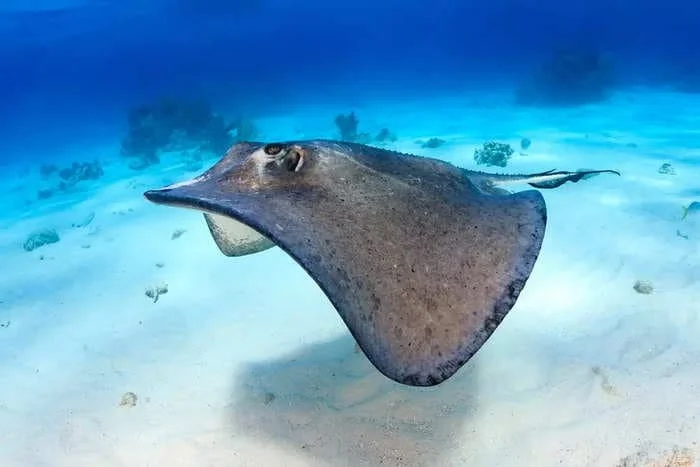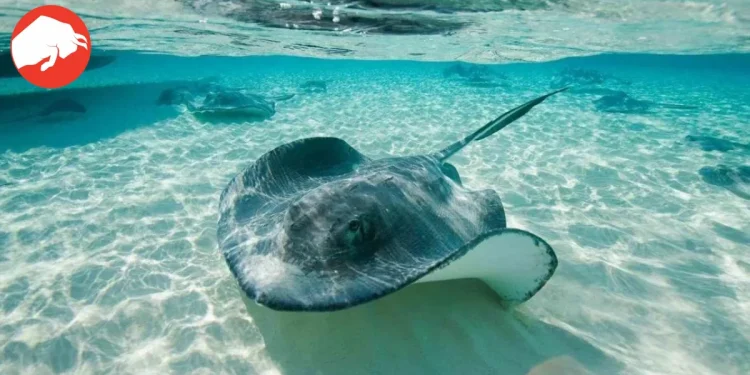In a curious turn of events that has both puzzled and fascinated the staff at an aquarium in North Carolina, a stingray’s unexpected pregnancy has sparked a series of scientific theories and investigations.
This phenomenon unfolded at the Aquarium and Shark Lab by Team Ecco in Hendersonville, where the aquatic mystery began with an unusual observation.
The Initial Concern: A Health Scare Turns into a Scientific Marvel
The story begins when aquarium staff noticed that one of their stingrays was showing signs of swelling, raising immediate concerns for her health.
“We were initially worried that the stingray had developed cancer due to the noticeable swelling,” shared April Smith, the lab’s executive director, in a revealing blog post.
The situation took a surprising twist when an ultrasound investigation revealed not a disease, but eggs. This discovery was the first clue that the aquarium was about to delve into a rare scientific inquiry.
Unraveling the Mystery: Theories Emerge
April Smith detailed the potential explanations behind the stingray’s pregnancy, highlighting the fascinating process of parthenogenesis. This biological phenomenon allows a female to produce offspring without fertilization, serving as a survival mechanism to preserve species in the absence of males.
“Parthenogenesis is typically observed in environments where male counterparts are scarce, such as in captivity or isolated natural habitats,” Smith elaborated, suggesting this could be the key to the stingray’s condition.

However, the plot thickened with the observation of bite marks on the stingray, who was sharing her tank with two male white-spot bamboo sharks. This led the team to speculate a more unconventional explanation.
“The realization dawned on us when we noticed the bite marks, a common behavior in sharks during mating. Could it be that one of the male sharks mated with the stingray?” Smith pondered, bringing a new angle to the mystery.
A Pregnancy Revealed: The Stingray’s Ultrasound
The latest ultrasound scans have confirmed the stingray’s pregnancy, showing she is carrying two, possibly three pups. This development adds weight to the inter-species mating theory, although, as Smith notes, “the theory awaits confirmation post-birth, unless earlier signs of a mixed breed emerge.”
The possibility of sharks and stingrays, being closely related taxonomically, engaging in interbreeding adds an intriguing layer to the ongoing investigation.
The Science Behind the Phenomenon: Parthenogenesis and Beyond
The case of the pregnant stingray in North Carolina opens a window into the complex world of animal reproduction, particularly in species capable of asexual reproduction like parthenogenesis.
This incident not only highlights the adaptability and survival strategies of aquatic life but also underscores the continuous surprises and learning opportunities nature offers to scientists and enthusiasts alike.
As the aquarium staff eagerly await the arrival of the stingray’s pups, this incident serves as a reminder of the mysteries that lie beneath the surface of our oceans and the intricate connections within the animal kingdom.
Whether the result of a rare form of reproduction or an unprecedented case of inter-species mating, this event is a testament to the wonders of aquatic life and the endless pursuit of knowledge in the field of marine biology.









